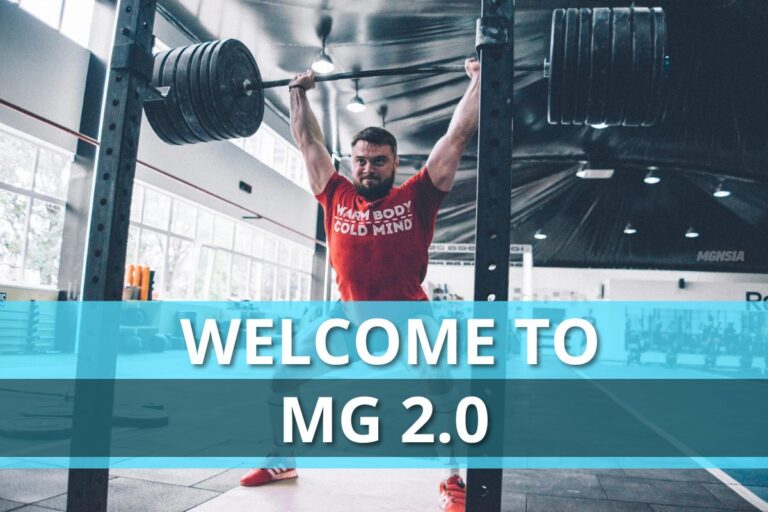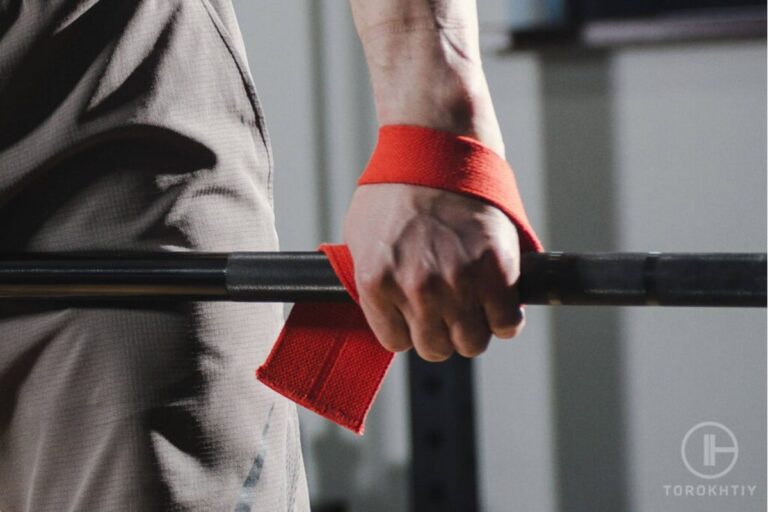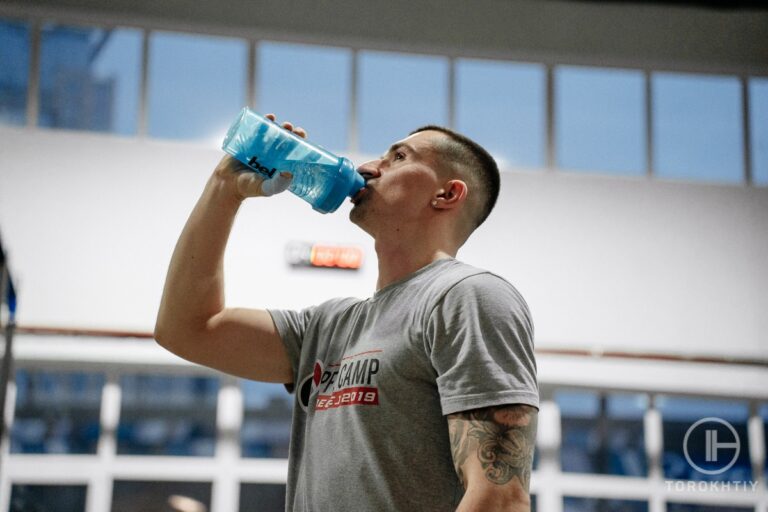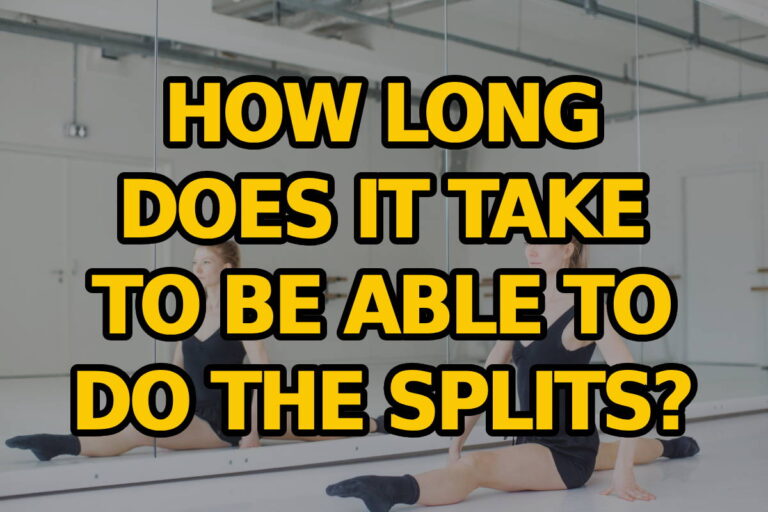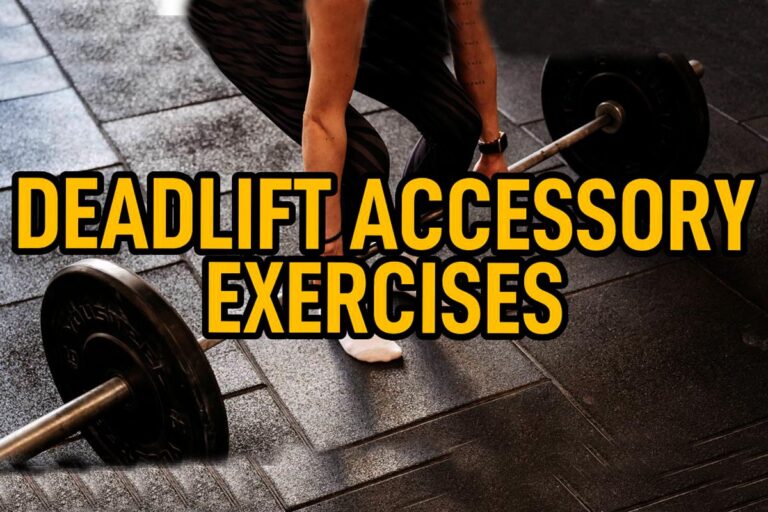Good Mornings vs Deadlift: Which Is More Effective?
Choosing between good mornings vs deadlift is often tricky. These two exercises work similar muscle groups, which is why people often use them interchangeably. Still, the workouts are different in terms of setup, bar placement, movements, and grip.
In this article, we explain both exercises, their pros, and cons, and how they would affect your workout regimen. Later on, we’ll also help you choose between stiff deadlift, Romanian deadlift or good morning.
When comparing good mornings vs deadlift, we first have to consider different placements of barbells. With the deadlift, you pull the barbell off the ground with your hands. Good mornings require similar movements to execute, but in this case, you’re putting the barbell on your back.
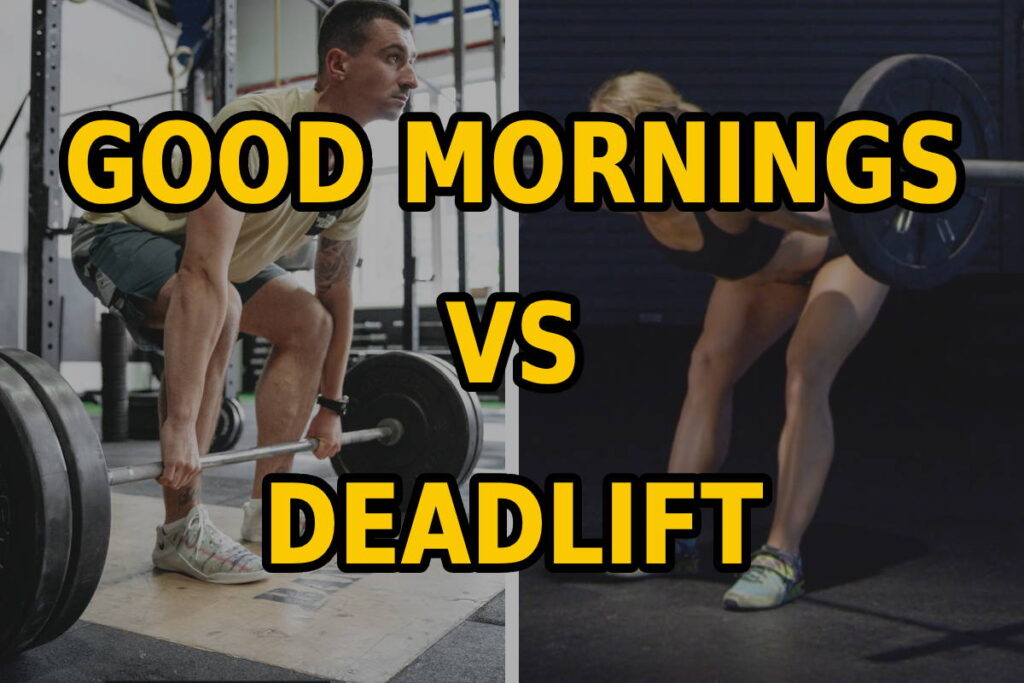
What is Good Morning?
The good mornings are a workout where you put a barbell on your back and hips forward until your torso is parallel with the ground. Although often overlooked, the good mornings can be a fantastic addition to your routine, especially if you want to improve squats and deadlifts.
The good mornings work your core, glutes, hamstrings, and erector spinae, having a similar impact as the deadlift. Because of that, people can easily replace these two exercises with each other. Furthermore, many people with grip and shoulder problems often use the good mornings as an alternative to the deadlift.
In terms of weights, it’s best to use 50% of your single repetition maximum. If you want to take it a bit easier, you can go with 40%. Of course, this might vary depending on the number of reps in a workout.
What is Deadlift?
The deadlift is one of the more recognizable workouts and a relatively simple exercise to perform. The main difference between good morning and deadlift is that the deadlift requires more arm engagement. It’s a complete workout that engages numerous muscle groups, and you don’t need a spotter for it.
Besides the core, glutes, hamstrings, and erector spinae, the deadlift also improves your lats and grip muscles. There are numerous variations of the workout, so you can always find the one that suits your specific exercise goals.
The deadlift is a perfect exercise for your back that you can do from one to three times a week. According to experts, you should deadlift your weight with each rep. The optimal weight might also vary based on your age.
Good Mornings vs Deadlifts: Compare Exercises and Main Difference
There is a lot to sift through when comparing deadlifts vs good mornings. While these two exercises are seemingly similar, there are numerous things that set them apart.
| The Difference | Better Option |
| Overall Strength | The deadlift |
| Muscles used | The deadlift |
| Transfer | Similar effect |
| Safety | Similar effect |
| Tempo | The deadlift |
Here’s a breakdown of the main differences between the two:
1. Overall Strength
The deadlift is an exercise used in strongmen and powerlifting competitions. It’s a widely accepted workout that helps your entire body and is often used as the primary focus of your training. On the other hand, the good morning is mainly an assistance exercise.
While both of these improve your overall strength, the deadlift has a better whole-body impact. The good mornings, although fantastic in their own regard, are better for isolating certain muscle groups.

2. Muscles Used
Once again, the deadlift is the superior option. It engages more muscles than the good mornings, improving both your lower body, but also upper regions. The good morning is a much better choice during leg days when you’re looking to focus on your glutes and hamstrings.
3. Transfer
Both of these workouts translate well into other exercises. The good morning is especially great if you’re looking to improve your barbell side lunges, low bar squats, barbell back squats, and barbell lunges. The deadlift helps you with all other deadlift variations, such as RDL and sumo deadlift, but also sprinting and jumping exercises.
4. Safety
To be honest, every exercise can be unsafe if you don’t execute it properly. While having a barbell on your back is always a risk, there are also potential dangers when doing the deadlift. This is especially true when using heavier weights. Among others, the deadlift is especially risky for people with limited hip flexibility and arm joint issues.
5. Tempo
You have much more leeway to control the tempo with the deadlift. In fact, faster movement might also help increase your power. On the other hand, you need to go slow with the good morning. As you have all this weight on your back, there’s always a risk of spine curving due to fast movements.
Aside from these differences, there are a few other things to keep in mind. Of course, the two workouts utilize barbells in different manners. They also differ in terms of set up, with the good mornings requiring a squat rack. On the other hand, during the deadlift, you should place the barbell on the ground.
One of the rare few things where the good morning excels is the grip involvement. Given that you’re placing the barbell on your back, the exercise doesn’t require enormous grip strength. Then again, this might also be perceived as a flaw, as the good mornings don’t develop your arm muscles.
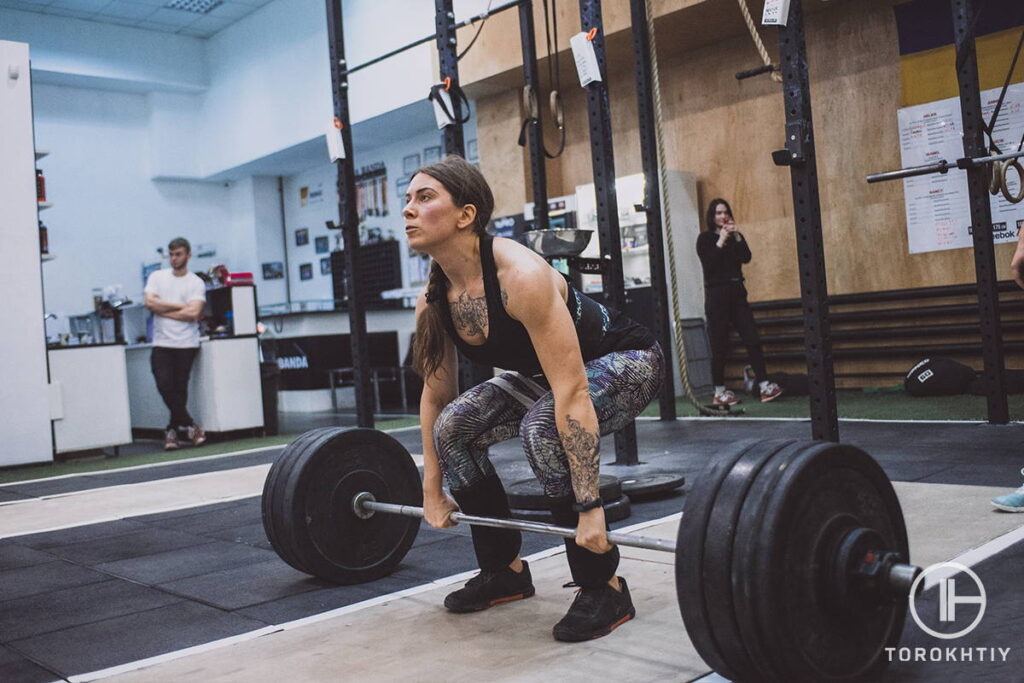
What Is Better, Good Morning or Deadlift: Summary
Most people will tell you that the deadlift is a much better option out of these two. It’s a complex exercise that works your entire body while also providing more tempo control. Furthermore, having all this weight loaded on your back during the good morning can feel a bit overwhelming, especially if we consider the movement required.
Anyway, here’s a breakdown of all the pros and cons between the two workouts:
Pros of Good Mornings
✅ Accessibility
The good morning doesn’t require any machines or complex equipment aside from a rack. So, doing this exercise is cheaper than some other workouts that require expensive stations.
✅ Strength
Despite being the inferior option compared to the deadlift, we can’t neglect the strength benefits of the good mornings. This workout is perfect for increasing your muscle mass, but also as a precursor for squats, deadlifts, and other workouts.
✅ Posture
Due to the exercise’s specific requirements, you should always be at 100% when doing the good morning. This type of training can significantly improve your posture, which makes it a fantastic choice for people with a sedentary lifestyle.
Cons of Good Mornings
❌ Movement
The good morning requires unnatural movement, and many people feel uncomfortable bending over with all this weight on their back. Because of that, exercise can be hard to learn, especially if you’re a beginner.
❌ Injuries
Given what we said about movements, the good morning could easily lead to injuries. While this can be said for many weight exercises, this exercise is even riskier in comparison as it potentially compromises your ligaments and spine.
❌ Flexibility
If you wish to perform this workout correctly, you need to have flexible hamstrings. A limited range of motion will prevent you from bending forward, thus reducing the exercise’s effectiveness.
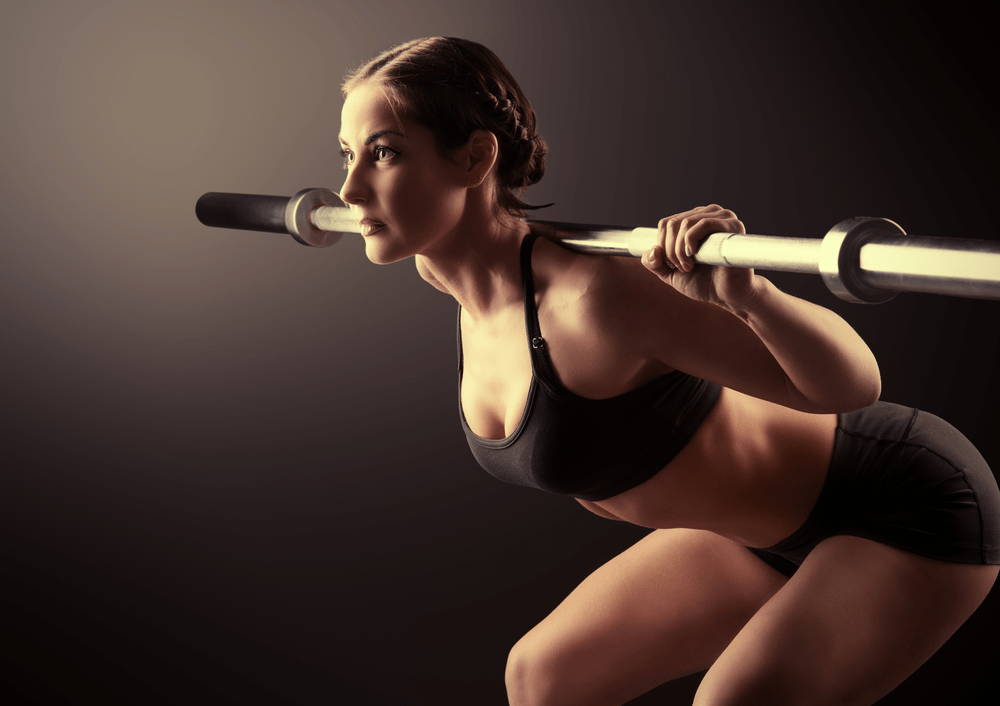
Pros of Deadlifts
✅ Strength
Similar to the good mornings, the deadlift is considered one of the best workouts for increasing strength.
✅ Full-Body Workout
The deadlift can work as the basis for your overall training regimen. It helps your upper and lower body muscles, stimulating various groups.
✅ Learning
Learning how to deadlift isn’t particularly hard. The exercise requires a normal body movement, that is, lifting, which we use almost every day.
Cons of Deadlifts
❌ Isolation
Learning how to deadlift isn’t particularly hard. The exercise requires a normal body movement, that is, lifting, which we use almost every day.
❌ Injuries
Like all other weightlifting training, the deadlift can put enormous stress on specific muscle groups and ligaments.
Deadlift Variations vs Good Mornings
The great thing about the deadlifts is that there are lots of variations to choose from. Each one of them has its pros and cons compared to the good mornings:
1. Good Mornings vs Stiff Leg Deadlifts
When choosing between a stiff leg deadlift or good mornings, there are a few things to keep in mind.
First off, the stiff leg deadlift is very different from the standard deadlift. The exercise puts much more emphasis on the glutes and hamstrings, similar to the good mornings. In other words, both of them are fantastic for isolating specific muscles. So, a stiff leg deadlift can be a fantastic replacement for the good mornings if you’re worried about potential back issues.

2. Romanian Deadlift vs Good Morning
Choosing between RDL vs good morning usually has to do with your barbell placement preferences. Unlike the standard deadlift and similar to the stiff leg deadlift, RDL is much better for targeting the glutes and hamstrings. This makes it a good alternative to the good morning.
However, limited studies indicate that the Romanian deadlift is better for building muscles than the good mornings. Because of that, you should probably prioritize RDL.
Simply hanging from a pull-up bar for as long as possible is a great way to improve your grip strength.

🔻12-Week Deadlift Strength Program by Oleksiy Torokhtiy
Unlock your true potential with our Deadlift Strength Program!
Designed for athletes by 2-time Olympian Oleksiy Torokhtiy, this 12-week program focuses on enhancing your deadlift strength, strengthening your back and legs.
Program details:
- 12 weeks;
- 3 days / week;
- 45-120 minutes per session;
- 50+ specific exercises;
- Focus on New Result in Deadlift;
- One-time payment, no recuring payments;
- Full access to all training content.
Start now and boost your deadlift results!
FAQ
Are Good Mornings As Good As RDL?
While the good morning and RDL affect similar body parts, limited studies indicate that the Romanian deadlift is the better option for building muscles.
Are Good Mornings Effective?
The good mornings are a very effective exercise and an excellent method for improving your posterior chain muscles. You can use it to target glutes, hamstrings, and lower back.
Do Good Mornings Help With Deadlifts?
Using good mornings can help your deadlift performance by strengthening your glutes, hamstrings, and lower back. All these muscle groups are used during the workouts, which is why the two exercises are somewhat interchangeable.
Conclusion
The good mornings and the deadlifts have numerous similarities. They both focus on the posterior chain and, specifically, the hamstrings, glutes, and lower back. So, doing one of them will also help when performing the other.
Between the two, the deadlift is a much superior alternative. It’s whole-body training that can benefit you in several ways, and you can use it almost every day.
Do you alternate between the good mornings and the deadlifts? How often do you perform these exercises? Share your preferences in the comments below!
Also read:
- Deadlift Starting Position
- How to Strengthen Grip for Deadlift
- Should You Deadlift Barefoot
- Why Sumo Deadlift Is Cheating
- Deadlift Standards
- Deadlift Stances
References:
- Electromyographic activity in deadlift exercise and its variants // NCBI: https://www.ncbi.nlm.nih.gov/pmc/articles/PMC7046193/
- Between Weight Age and Best Deadlift // ResearchGate: https://www.researchgate.net/figure/The-relationship-between-weight-age-and-best-deadlift_fig2_336204343
- Effects of load on good morning kinematics and EMG activity // NCBI: https://www.ncbi.nlm.nih.gov/pmc/articles/PMC4304869/
- Narrative review of injuries in powerlifting with special reference to their association to the squat, bench press and deadlift // NCBI: https://www.ncbi.nlm.nih.gov/pmc/articles/PMC6059276/
- Muscle Activation During Various Hamstring Exercises // Journals: https://journals.lww.com/nsca-jscr/Fulltext/2014/06000/Muscle_Activation_During_Various_Hamstring.11.aspx
Why Trust Us?
With over 20 years in Olympic Weightlifting, our team does its best to provide the audience with ultimate support and meet the needs and requirements of advanced athletes and professional lifters, as well as people who strive to open new opportunities and develop their physical capabilities with us.
By trusting the recommendations of our certified experts in coaching, nutrition, dietology, and sports training programming, as well as scientific consultants, and physiotherapists, we provide you with thorough, well-considered, and scientifically proven content. All the information given in the articles concerning workout programming, separate exercises, and athletic performance, in general, is based on verified data. We ensure that you can rely on our professionals’ pieces of advice and recommendations that can be treated as personalized ones which will benefit you and fully meet your needs.
The product testing process is described in more detail here
Author: Sergii Putsov
Head of Sport Science, PhD
Best Results: Snatch – 165 kg,
C&J – 200 kg
Sergii Putsov, Ph.D., is a former professional weightlifter and National team member, achieving multiple medals in the 94 kg weight category at national competitions. With a Master’s degree in “Olympic & Professional Sport Training” and a Sport Science Ph.D. from the International Olympic Academy, Greece, Sergii now leads as the Head of Sport Science. He specializes in designing training programs, writing insightful blog articles, providing live commentary at international weightlifting events, and conducting educational seminars worldwide alongside Olympic weightlifting expert Oleksiy Torokhtiy.



